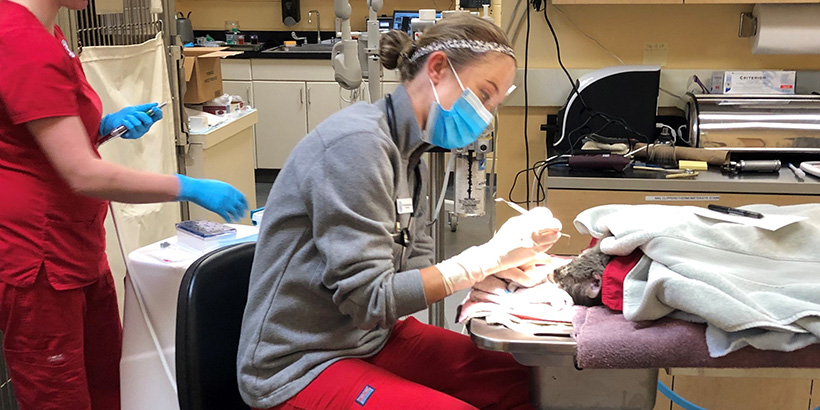
Among the many things impacting the wellbeing of pets, good dental health is near the top of the list. Dental care requires more regular input from a pet’s family than other preventative care, like vaccines.
So what can you do?
1) Brush your pet’s teeth! It stimulates the gums and removes food particles. (Use a toothpaste specially formulated for pets, or just use water and a toothbrush.) Plus, preventing dental disease reduces the likelihood of infections spreading from your pet’s mouth to the heart or kidneys—which could lead to failure of these or other vital organs. Even daily or frequent brushing or rubbing of the gums can go far in protecting your pets’ health. It builds a bond with our pets, promoting a strong emotional connection and offering opportunities to observe problems at the start.
2) Provide chew toys or treats created to stimulate gums and help teeth remain strong and firmly in place.
3) Feed hard kibble (instead of soft canned food). This can be the first tool for dental care on a daily basis.
Beyond preventive care, people and pets require trips to the dentist or veterinarian respectively, but, that’s where the similarities perhaps end. People can sit still in the dental chair and explain their discomfort, animals cannot.
Make no mistake—pets can feel the same discomfort of loose, infected, or broken teeth. They also might experience fear since they can’t understand why they’re in pain. Not only do these patients lack the ability to define what they’re feeling, they often don’t like someone checking their mouth and certainly won’t hold still! But, there’s relief available.
So what happens during a dental procedure?
1) Providing appropriate anesthesia is the most important aspect of a comprehensive dental exam and treatment. This can be difficult for some patients with health issues that make anesthesia riskier. However, anesthesia can be tailored to each patient to reduce inherent risk. Teeth are cleaned of the hard, chalky material called tartar or calculus that’s comprised of minerals from saliva, food particles, and bacteria.
2) Veterinarians look for infection, tumors, misalignments, or disease.
3) Next are dental x-rays to identify the roots and placement of all teeth and find areas that need further attention.
4) Loose, damaged, or infected teeth are often removed.
Depending on the condition of the tooth and extra procedure needed, the expense varies for extractions, unless part of an overall pre-approved package.
Just like in humans, local anesthesia is often injected into gums in addition to general anesthesia to prevent pain during and immediately after the procedure. Pain medicine is offered for the next few days to help speed recovery.
It may seem like a complex process, but good dental care through proper food, appropriate chews for the size and type of pet, routine observation by the family, and proper veterinary care will ensure that your pet has the best dental and overall health.
